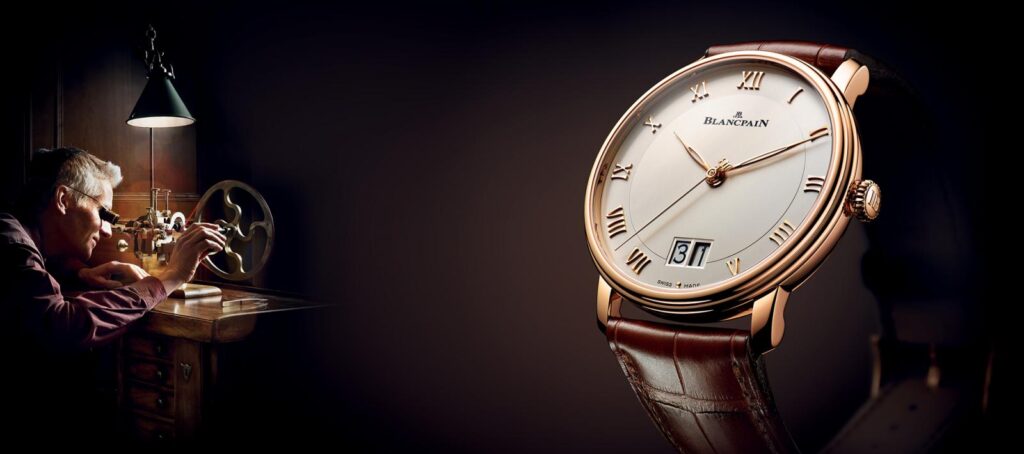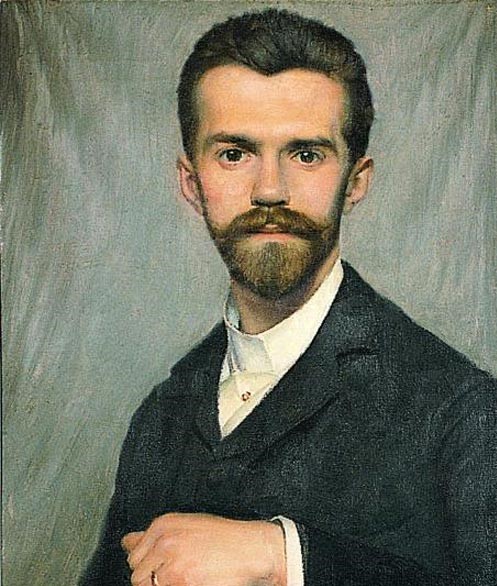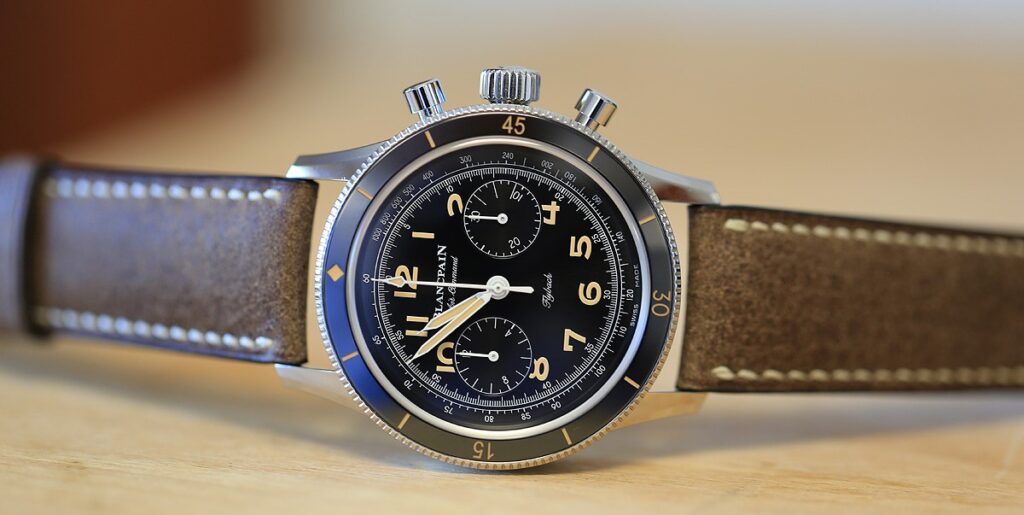The First Watch Brand

It’s a no-brainer—the first watches predate the first watch brand. However, it is branding that permeates the world of timekeeping to this day. What’s the difference between a $200 watch and a $2,000 (or more) watch? A big factor to consider is the brand. While accuracy is easily accessible and new technologies have made watches more digitally complex, the name game holds mighty sway in the market—especially for traditional mechanical pieces. There are some good reasons for this. Many watch houses (or maisons) have been established for centuries. Branding imparts an air of tradition, implies seasoned technique, and can denote a genuine quality. Innovations by traditional houses lifted mechanical watches out of the quartz revolution (aka crisis) and continue to set new standards in timekeeping.
As it stands, the longest running watch brand is Blancpain from Switzerland. Their brand name was established all the way back in 1735. Tied to the early years of mass production—one of the most democratizing movements in the history of timekeeping—Blancpain has withstood centuries of change. But one might ask, “how does a brand end up lasting almost 300 years?”. Ahead we’ll cover some details regarding Blancpain’s history to get to the bottom of this potential inquiry.
Blancpain’s Historical Changes

Beginnings for the brand Blancpain were pretty humble. To start, Jehan-Jacques Blancpain started his business by making watches in his home. Not a lot of the business changed until his great grandson, Frédéric-Louis Blancpain, shook things up in 1815. Frédéric-Louis shifted production from traditional hand crafting to industrial production. It was not full factory mass production—but for how early in the 19th century this decision was made it was a forward-thinking way to keep the brand moving ahead. Under Frédéric-Louis’s leadership Blancpain replaced the crown-wheel mechanism on their watches with a cylinder escapement. This big innovation was new to the watch world and worked wonders with serial production.
By the late 19th century American competitors were putting pressure on Swiss companies and brands. Blancpain answered this competition by opening a larger manufacturing facility in 1865. Their Suze-River-powered two-storey operation was energy efficient and there to meet a higher demand for luxury timepieces. Blancpain’s quality watches and market savvy production kept them from going under—unlike other 19th century Swiss watchmakers. Another note to add here: The Blancpain company was still owned by the family at this time, over one century after its establishment.
Eventually family management of the brand ended in 1932. From there its products and name were carried by friends of the Blancpain family. Laws in place at the time of switching hands required the new owners to change the company name (the namesake having no true heir). This lead to the new name “Rayville Blancpain”. Fast forwarding from the 1930s on, Rayville-Blancpain eventually joined the Société Suisse pour l’Industrie Horlogère (SSIH)—which featured Tissot, Omega, and others. Rayville-Blancpain did well for itself under this umbrella, until the quartz revolution/crisis kicked off in the 1970s. By the 1980s, the brand was bought by Piguet. The advent of the quartz crisis not too long prior essentially sent the brand underground under new ownership. However, the branding of larger Swiss watchmakers carried Blancpain’s mechanical watches into the 21st century.
A Swatch-Owned Mechanical Legacy

In the 1990s the SSIH bought back the Blancpain name. SSIH later became known as “Swatch”—making a quartz brand a key savior of an otherwise mechanical-only company. Still surviving under the watchful eye of Swatch, Blancpain’s existing slogan is, “Blancpain has never made a quartz watch and never will”. It’s an irony that such a staunchly mechanical brand has the backing of arguably the biggest name in quartz watches (aside from Timex). Adding an extra value to their marketing and brand, Blancpain stays on-brand by only making select mechanical styles in smaller batches. Where a brand like Rolex makes around 2,000 watches per day, Blancpain does about 30. After nearly 3 centuries of innovation, relative obscurity, then reincarnation, it’s impressive that the Blancpain name has stuck around. Their story serves as an example of how Swiss brands carrying Swiss brands has shaped and influenced the modern watch industry.
Staying On Brand (A Final Note)
What’s in a name? It can be anything from quality, history, or even simple commercialism. It’s important, then, to shop based on taste and specifications. Many watch brands offer similar quality at varying prices. So find what’s a proper standard for yourself and grow the collection from there. Everything from a Timex to a Blancpain has its merits—so take your pick with a critical eye. In the end, all watches have their own utility and style, regardless of who’s stamping the dial.
Times Ticking has been in operation for more than 30 years, since 1982. We have performed watch repair for customers both locally and internationally. If it Ticks! We KNOW it! Our team of watch repair technicians have a combined experience in watchmaking of over 120 years.

